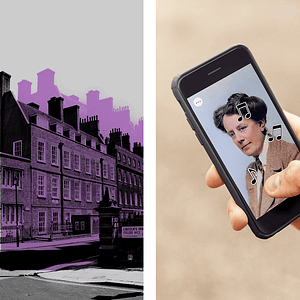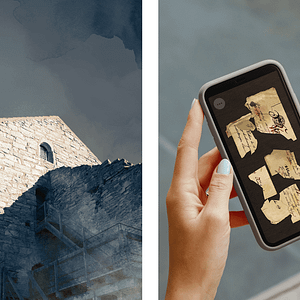The Saint Nicolai Church
The Saint Nicolai church was built in 1220-1230, and fully completed around the year 1400. Saint Nikolaus (or St. Nicholas) is the patron saint of sailors and fishermen.
Ichabod's home
This street is called Rackarebacken, which means “rascal’s hill”, as this was the street where the town executioner and his assistant - the rascal - lived during the 1600-1800’s.
Ichabod's school
The DBW Bell-Lancaster school was started in 1815 and moved between various locations around town, until it moved to this building, specifically built for the purpose of being a school.
St. Katarina Church
St. Katarina was built as a monastery church by the Franciscan order in the 1250’s. The church was expanded in the 1300-1400’s, but was never entirely completed.
The Engströmska House
This white 3-storey house dates back to the 1200’s. According to a local legend, the cellars are haunted as there supposedly was a jail and torture chamber in the basement at one time
St. Olof church ruin
According to legend, a man posing as a priest poisoned the St. Olof congregants during communion in the 1350’s. Among the dead were the vicar, three priests and several congregants.
The Lindgården Inn
The Lindgården inn is built on the foundation of a house from the 1300’s. It was purchased in 1587 by the Store Compagniet society, and at one point the people’s court was moved here.
The monastery gate
Behind this gate is the old Franciscan monastery, connected to the St: Katarina church. The mysterious inscription over the gate has had many different interpretations over the years.
The Visby Cathedral
Visby’s cathedral, the Sankta Maria church, is the only mediaeval church in Visby which hasn’t fallen into disrepair and turned into a ruin. It has been a parish church since 1225.
Helgeandshuset
Helgeandshuset (The Holy Spirit House) to your left, was originally built as a hospital in the early 1800’s, but today it houses the offices of the Visby diocese.
The Saint Nicolai Church
The Saint Nicolai church is the best preserved ruin in Visby, even though it was ravaged by attacks, abandoned during the reformation period, and later exploited for building materials.









